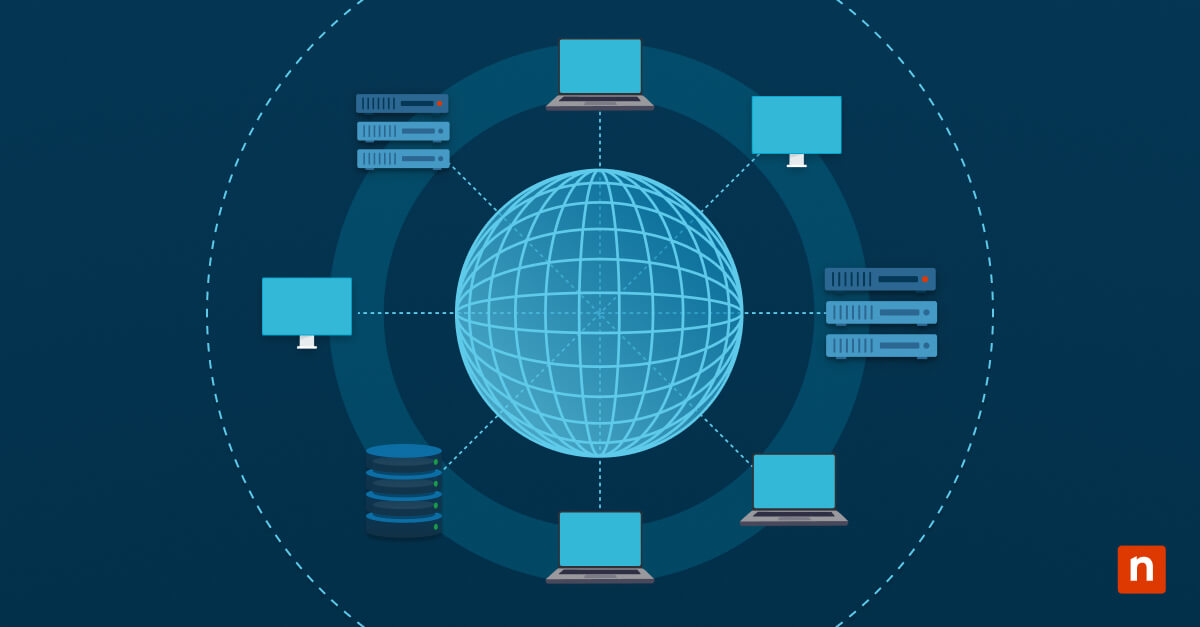A simple and quick way to protect your data environment is by implementing Windows application whitelisting, a strategy that lets only trusted software run on your system. This not only safeguards you from malicious applications but also gives you application control, ensuring stability and security. This guide will help you understand what Windows application whitelisting is and the tools and technologies you can use to enforce whitelisting policies and best practices for whitelisted software management.
A video on Securing Your Environment: A Guide to Windows Application Whitelisting is available.
Stop reacting—start leading. Learn how to shift to a proactive IT management strategy with our step-by-step guide. Get started.
Understanding application whitelisting
Windows application whitelisting is a security approach that only allows approved and trusted applications to run in a Windows environment. This proactive method protects systems by preventing unauthorized or malicious software from running and potentially harming the system.
By using this strategy, you can reduce your exposure to cyberattacks and improve network security. Furthermore, this approach simplifies system management by giving IT administrators greater control over the software used, ensuring compatibility and stability across the network.
The importance of this strategy lies in its ability to significantly mitigate the risk of cyber threats, including malware, ransomware, and zero day attacks, by preemptively denying them the operational foothold within the system.
Preparing for Windows application whitelisting
There are a few steps you’ll want to take before getting started on Windows application whitelisting:
- Create a comprehensive inventory of your software and conduct a detailed audit of all applications used across your network to establish a baseline.
- Thoroughly review your security needs to understand the specific application access requirements of different user groups and departments within your organization.
- Develop and refine your whitelisting policies within a sandbox environment to allow for safe testing and adjustments before deployment.
Tools and technologies for enforcing whitelisting policies
Let’s look at some useful tools that will help you implement and enforce application whitelisting policies, including built-in and third-party tools.
Built-in Windows features
Windows Defender Application Control (WDAC) and Microsoft AppLocker stand out for their ability to fine-tune application permissions, ensuring only trusted applications run in your environment.
WDAC, known as Windows Defender Application Control, boosts security through Configuration Manager. It allows you to create, implement and manage application control policies. This feature is available for users of Windows Pro/Pro Education/SE, Windows Enterprise E3/E5 and Windows Education A3/A5, ensuring accessibility for different organizational requirements.
Integrated directly into the operating system, WDAC is compatible with Windows 10 and later versions, as well as Windows Server 2016 and newer.
Microsoft AppLocker is an important tool if you are seeking to effectively manage which applications are allowed to run in your Windows environment. By using criteria like publisher identity, file paths and file hashes, AppLocker provides precise control over application execution rights.
This feature is built into Windows 10 and newer versions, including Windows Server 2016 and later, making AppLocker a versatile tool for enhancing security and preventing unauthorized software usage on Windows platforms. It is also used by some features of Windows Defender Application Control.
Best practices for managing your whitelist
Effectively managing your application whitelist requires you to follow several best practices to ensure both security and operational efficiency.
Roll out in phases: Engage in a phased rollout of your whitelist policy to minimize operational disruptions and allow for gradual adaptation.
Review and update policies: It is essential to continually review and update policies so your list remains current and accommodates new whitelisted software releases and updates.
Regularly log and monitor: Comprehensive logging and monitoring are vital for tracking any blocked applications and unauthorized execution attempts, providing valuable insights for refining your whitelist policies.
Engage and train stakeholders: By actively involving stakeholders from various departments, you can gather essential feedback on application requirements and restrictions and foster a collaborative approach to application management.
Select only necessary rule types: Be mindful of alternative rule types, such as Certificate Rules and Hash Rules. While they offer additional granularity, Microsoft advises that Certificate Rules might introduce performance issues, suggesting a measured approach when using them.
Common issues with Windows application whitelisting
While the process of whitelisting your applications is fairly straightforward, you might run into a few issues along the way. Here are some ways to address them.
Legitimate application blocked
If a valid program is mistakenly prevented from running, it can cause significant disruptions to your work processes and productivity. To address this problem, take these steps to ensure that whitelisted software is not mistakenly restricted:
- Start by verifying the whitelist to confirm that the program in question is indeed approved for use.
- If the program is listed but still blocked, review the rule configuration for any errors, such as incorrect paths or version numbers, which may have caused the unintended block.
- Perform a thorough analysis of system and application logs to identify the underlying cause of the block. By examining logs for error messages or warning signs that occurred around the time the program was launched, you can identify and resolve the issue, restoring access to the essential software.
Whitelist policy not applied
When a whitelist policy for applications is not enforced as expected, there are a few things you can do to uncover the problem.
First, confirm that the whitelist policy has been accurately associated with the correct Organizational Unit (OU) and is being enforced through the necessary methods, such as Group Policy Objects (GPO) or System Center Configuration Manager (SCCM). This ensures that the policy is correctly applied across the designated systems.
Additionally, considering the hierarchical structure of group policies, it is essential to examine any potential conflicts that may result from inheritance. In some situations, policies established at higher levels in the Active Directory may unintentionally override or clash with the applied whitelist policy at lower levels, thus preventing it from being enforced as intended.
Application functionality issues
When addressing issues related to the functionality of whitelisted software, particularly with complex applications, the underlying cause often stems from inadequate permissions for essential auxiliary components crucial to the application’s operation.
A thorough examination of system and application logs can reveal situations where essential secondary components, such as dynamic link libraries (DLLs), scripts, or executables relied upon by the main application, are being unintentionally hindered. To effectively diagnose these issues, use tools and reports from Remote Monitoring and Management (RMM) software like the Windows Event Viewer to identify all the dependencies an application may need.
Once these dependencies are identified, carefully adjust whitelist policies to include these critical components. This adjustment should be approached with caution to ensure that adding these items to the whitelist does not inadvertently compromise the overall security level that your whitelist policy aims to uphold.
Simplify Windows management with application whitelisting
Windows application whitelisting is an important tool for reinforcing team collaboration and security within your organization. Understanding how to manage application whitelisting roles and permissions is vital for enhancing workflow management and protecting against security breaches in the modern business environment. By leveraging Windows application whitelisting, you can fortify data security and streamline remote employee management, making the process straightforward and efficient.








